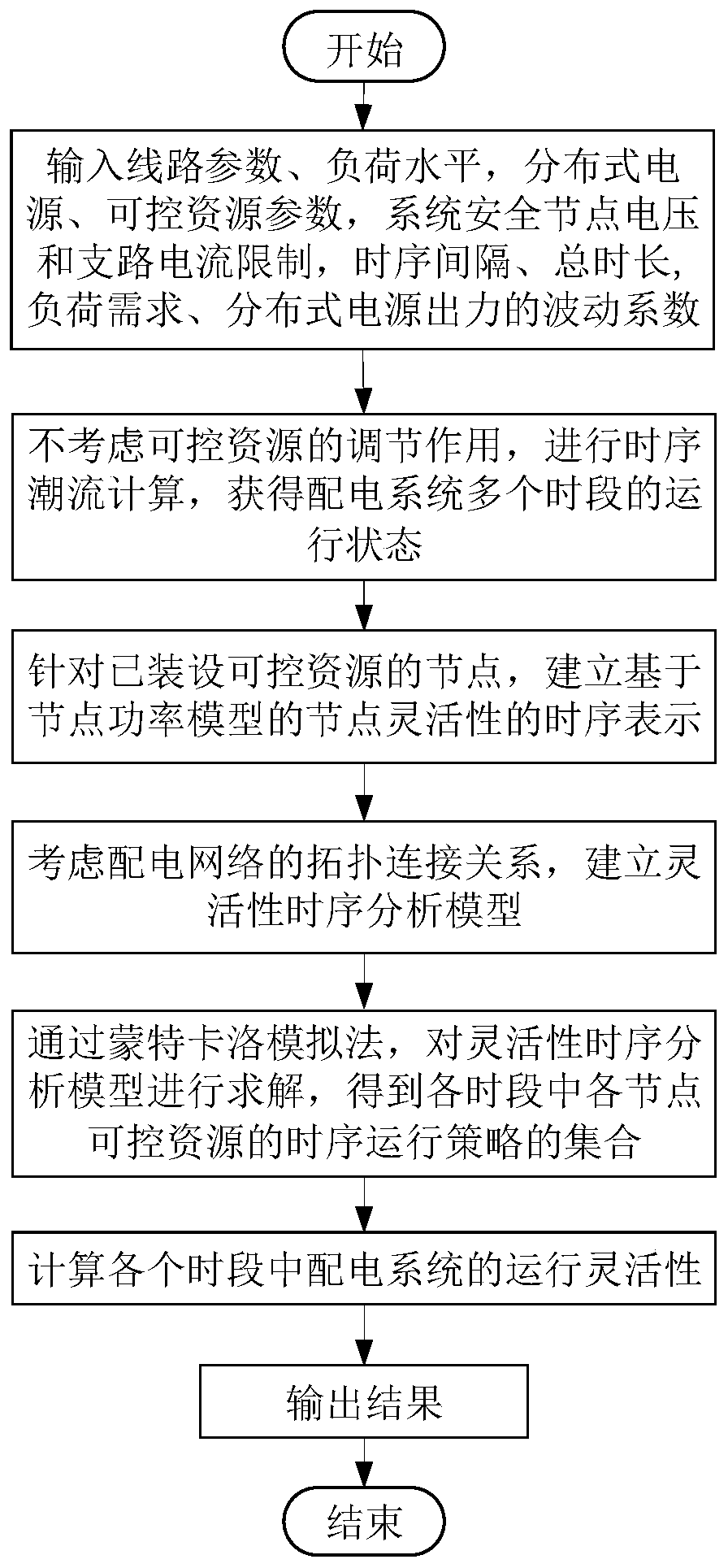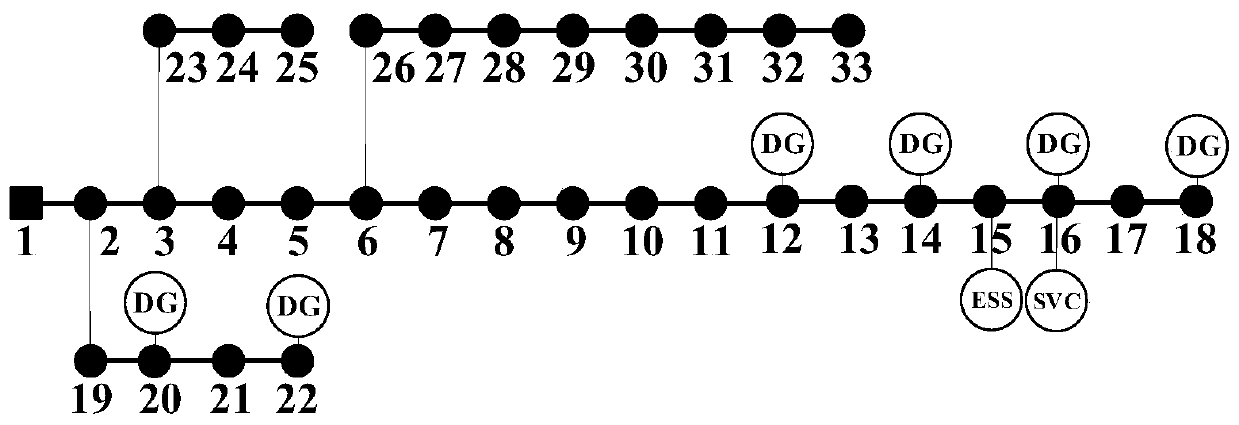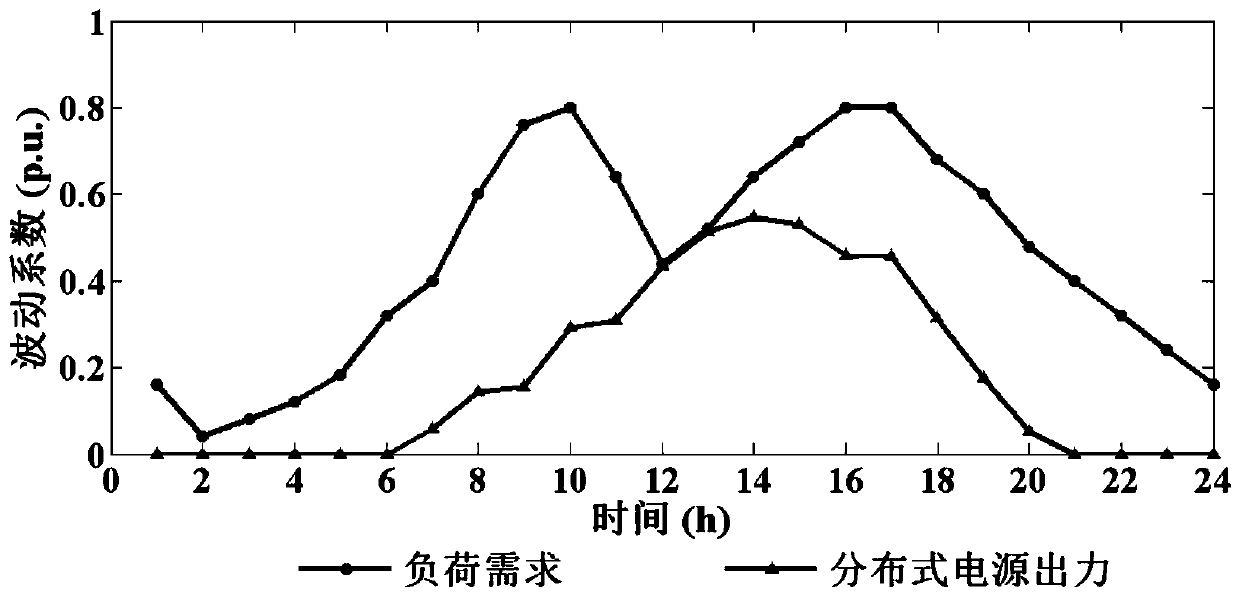Sequential quantitative analysis method for operational flexibility of active distribution system
A power distribution system, quantitative analysis technology, applied in the direction of electrical components, circuit devices, AC network circuits, etc., can solve the problems of lack of flexibility evaluation methods for power distribution systems
- Summary
- Abstract
- Description
- Claims
- Application Information
AI Technical Summary
Problems solved by technology
Method used
Image
Examples
specific Embodiment
[0044] For this embodiment, first input the impedance value of the line element in the IEEE 33 node system, the active power and reactive power of the load element, and the network topology connection relationship, its structure is as follows figure 2 As shown in Table 1 and Table 2 for detailed parameters; set up two controllable resource access points, node 15 is connected to an energy storage system with a capacity of 3MVA, and node 16 is connected to a static var compensator with a capacity of 1Mvar; consider For the high-penetration access of distributed power sources, 6 groups of distributed power sources are respectively connected to nodes 12, 14, 16, 18, 20, and 22, with a capacity of 0.4MVA; considering that the lines close to the source nodes in the power distribution system have For larger transmission capacity, the setting of the upper limit of line transmission capacity is shown in Table 3; the minimum value of node voltage is set to 0.9p.u., the maximum value of ...
PUM
 Login to View More
Login to View More Abstract
Description
Claims
Application Information
 Login to View More
Login to View More - R&D
- Intellectual Property
- Life Sciences
- Materials
- Tech Scout
- Unparalleled Data Quality
- Higher Quality Content
- 60% Fewer Hallucinations
Browse by: Latest US Patents, China's latest patents, Technical Efficacy Thesaurus, Application Domain, Technology Topic, Popular Technical Reports.
© 2025 PatSnap. All rights reserved.Legal|Privacy policy|Modern Slavery Act Transparency Statement|Sitemap|About US| Contact US: help@patsnap.com



